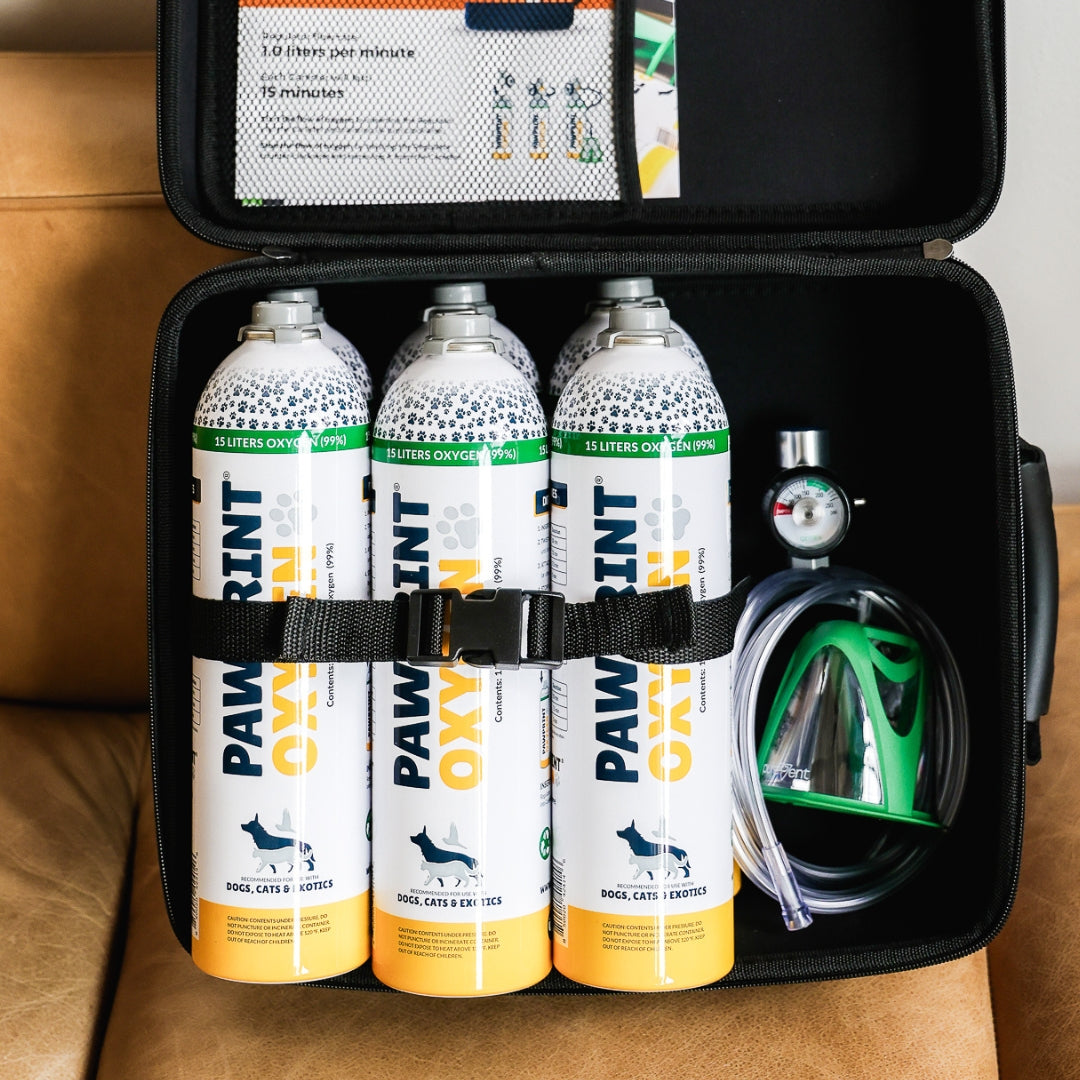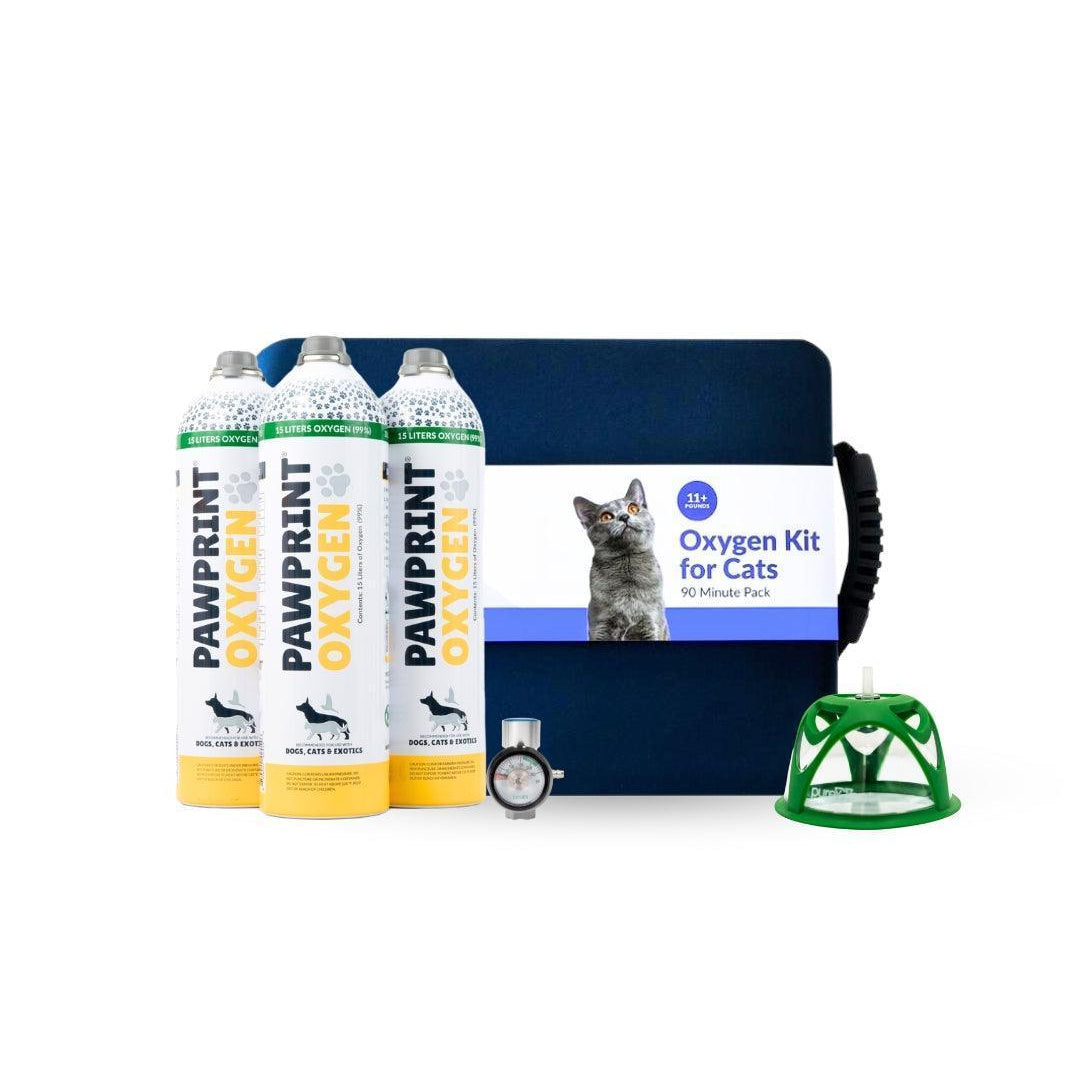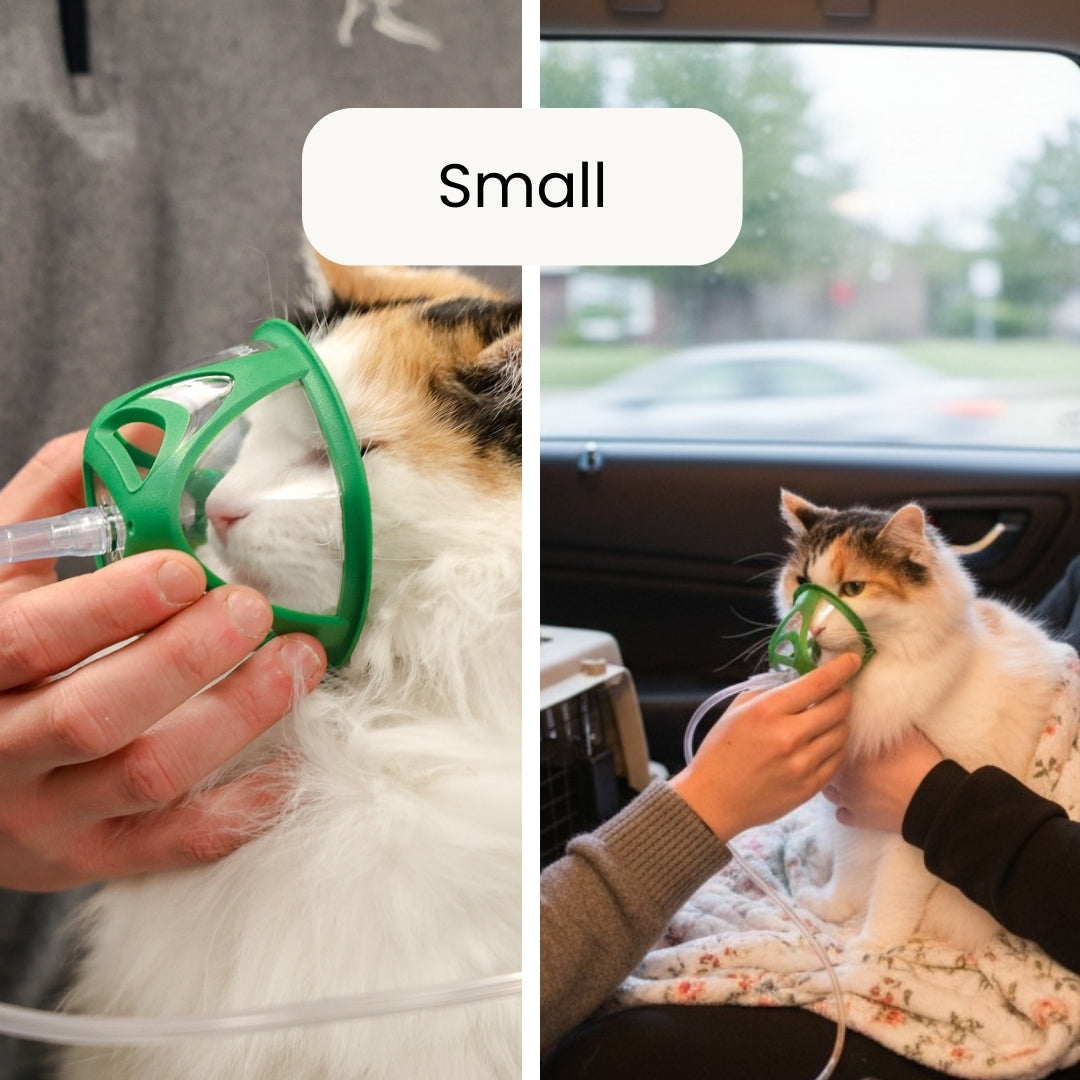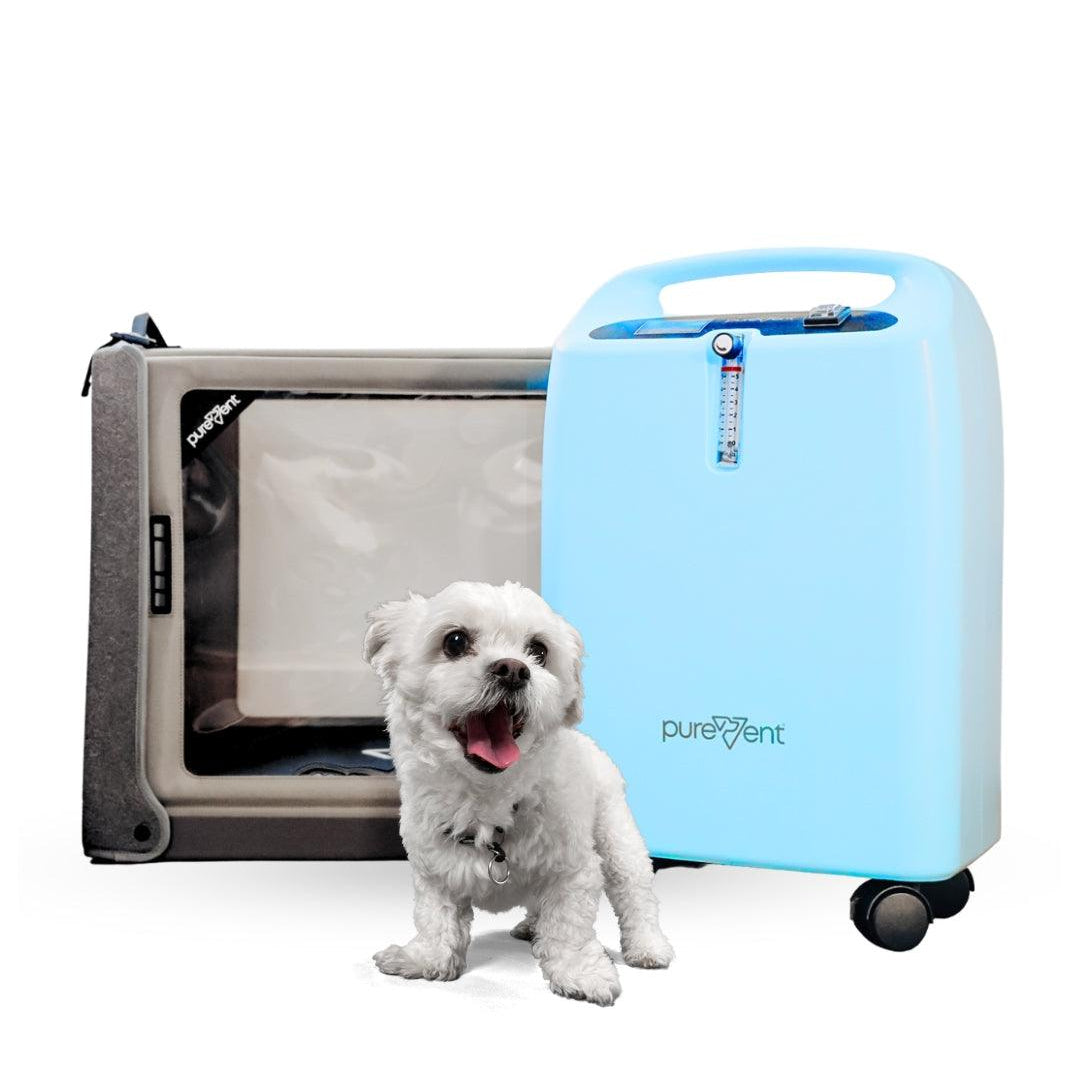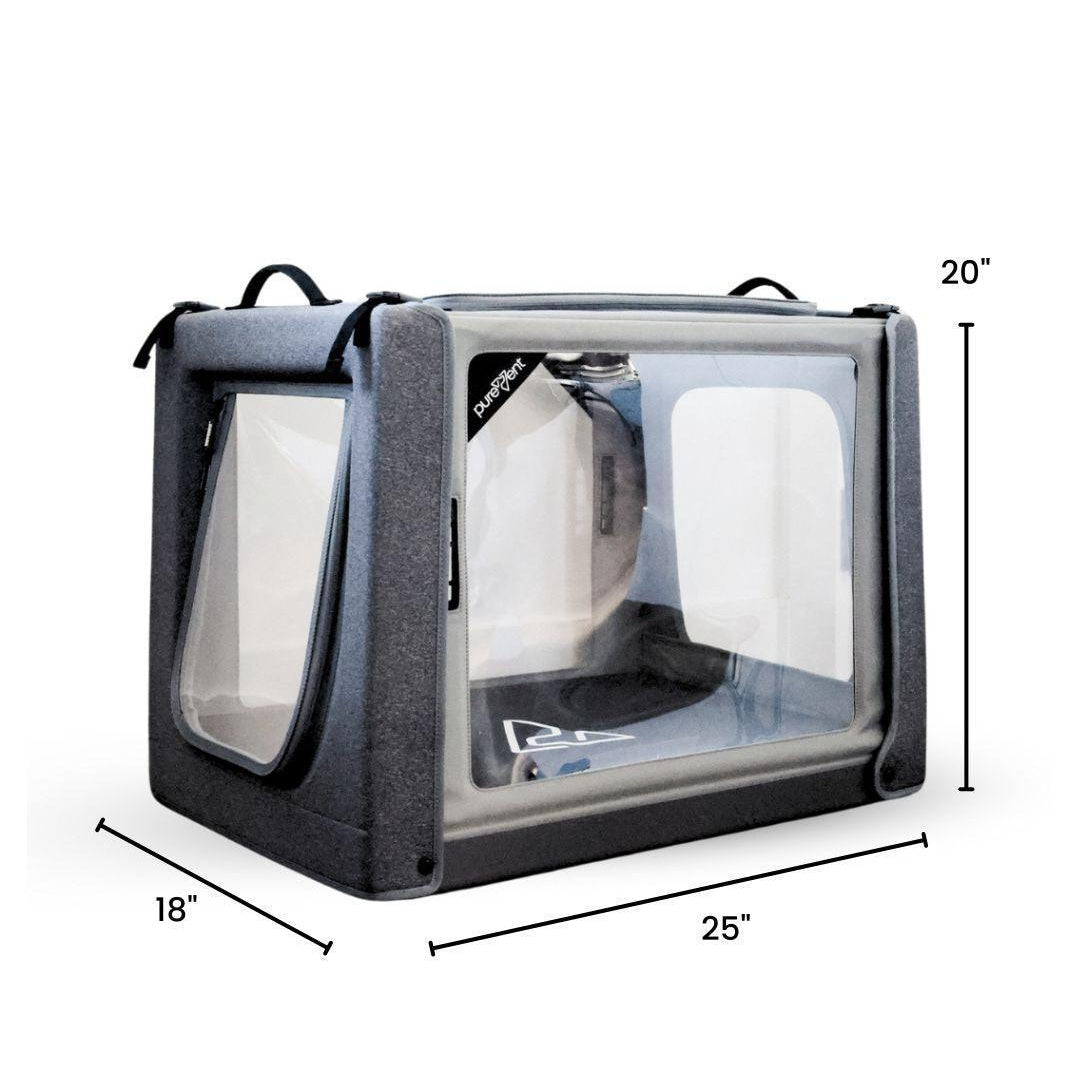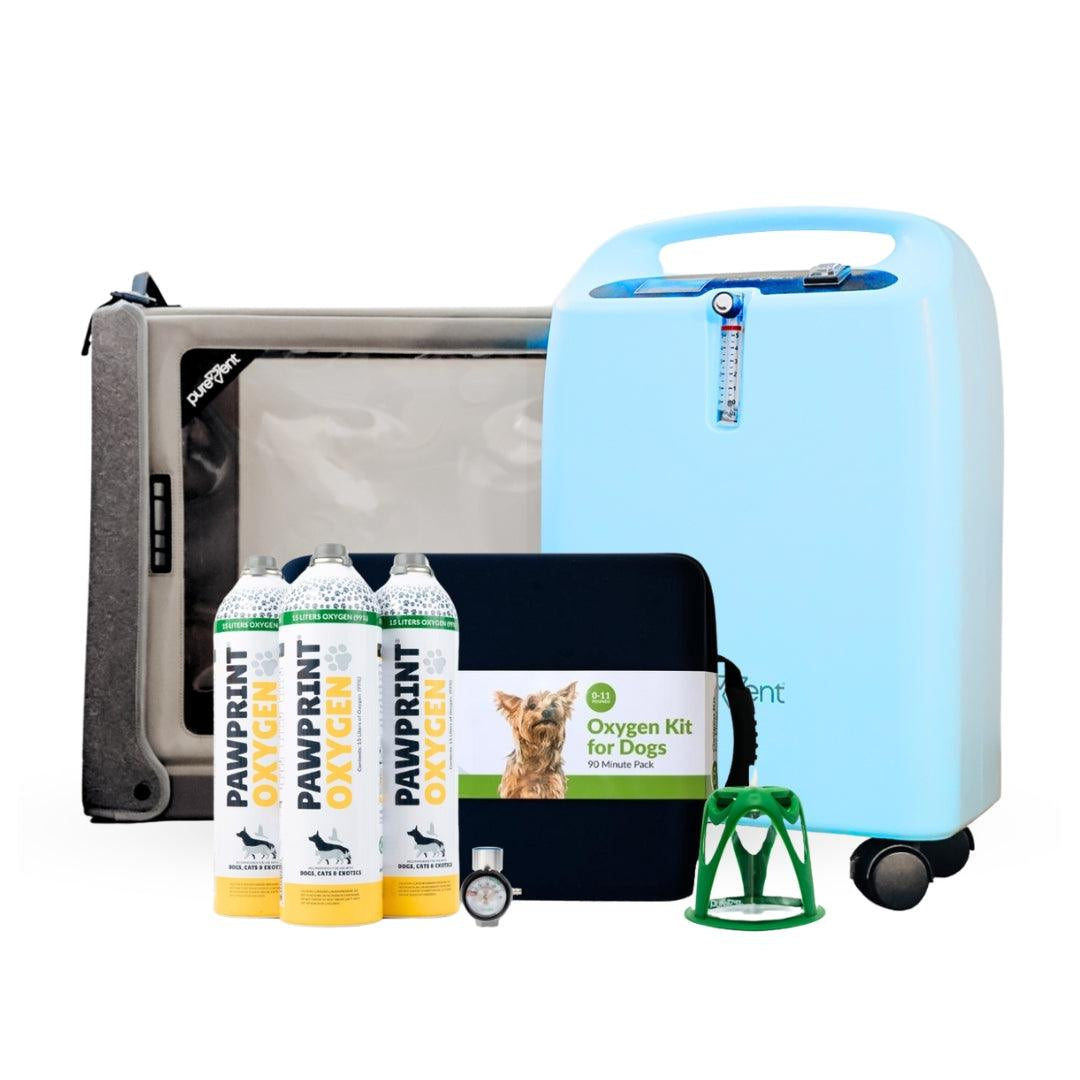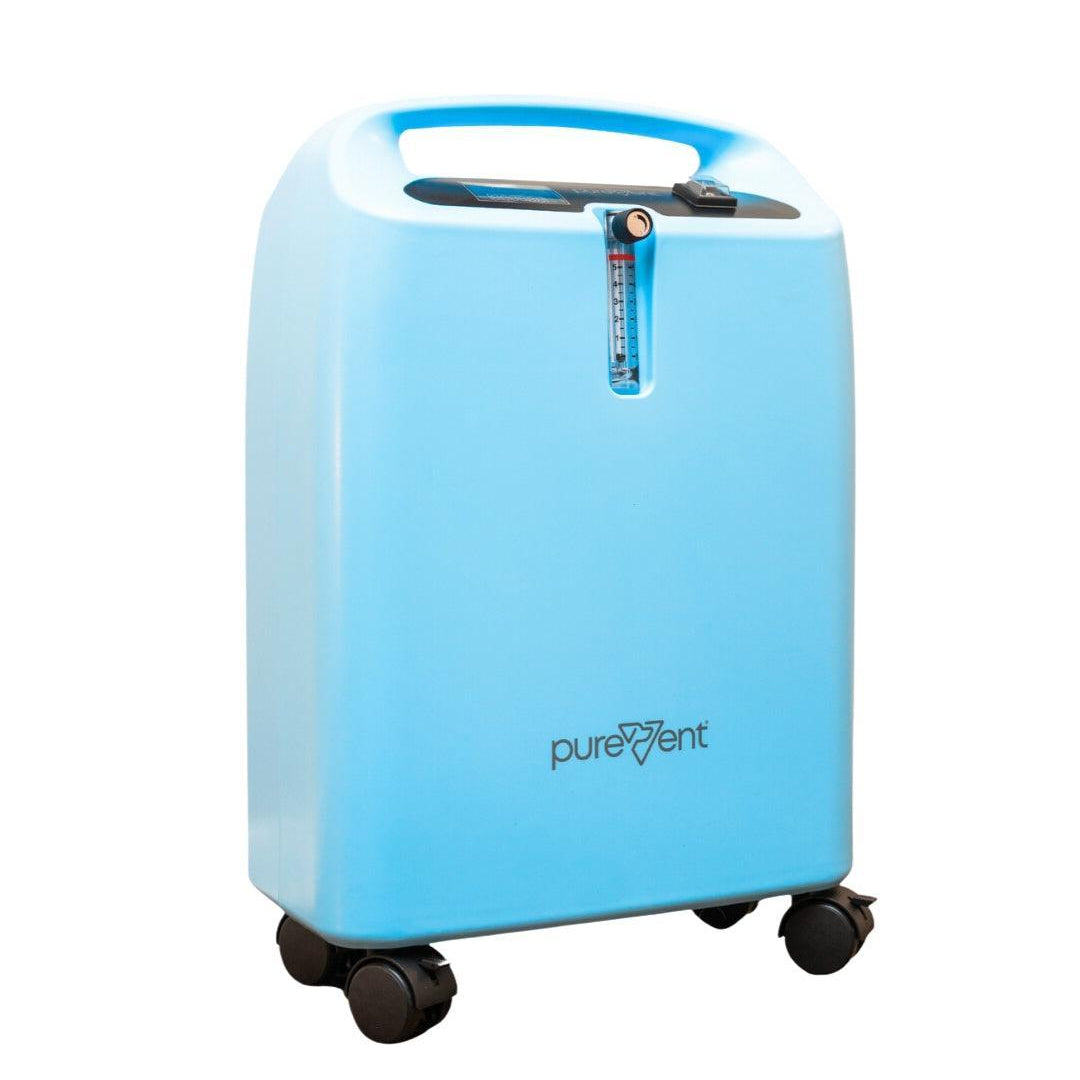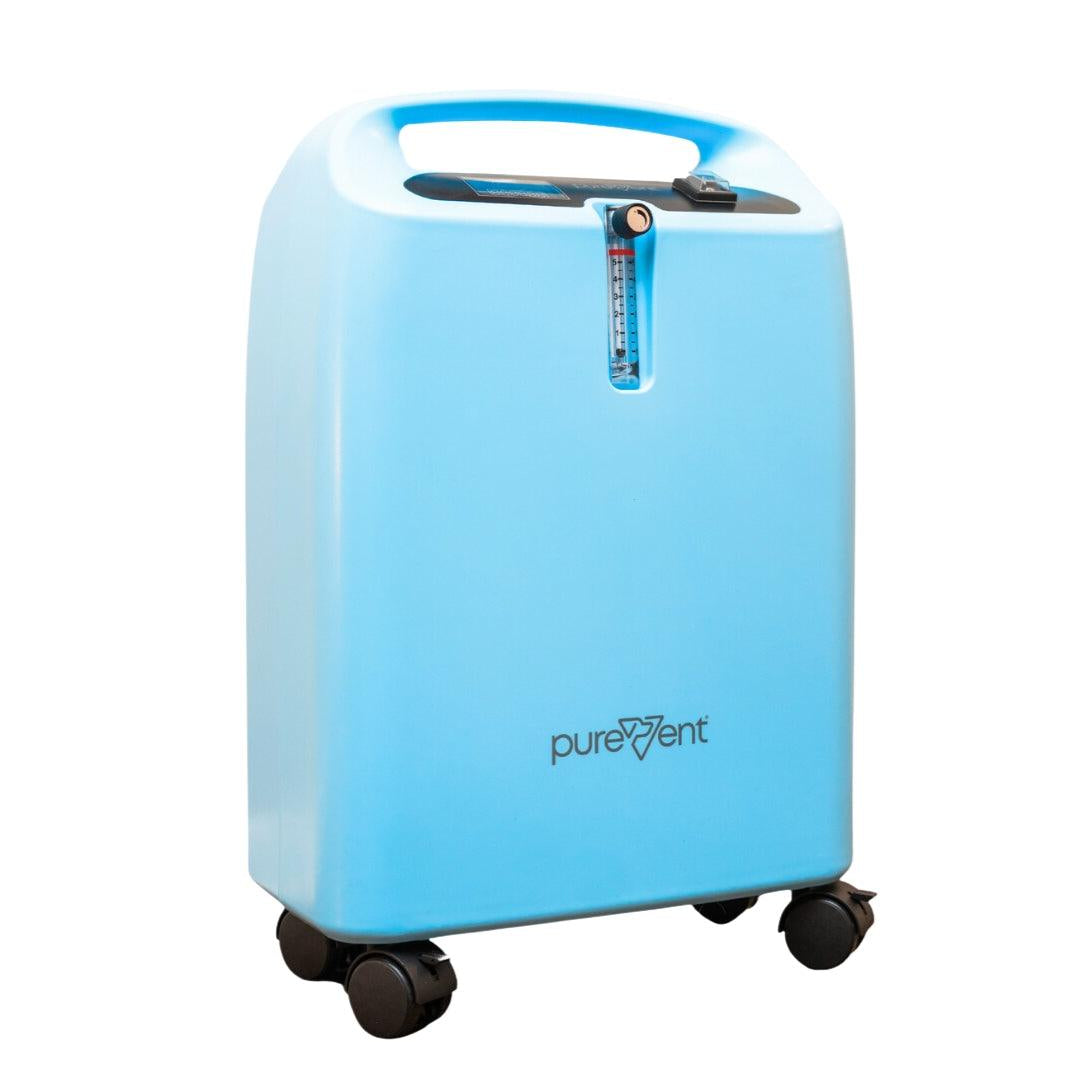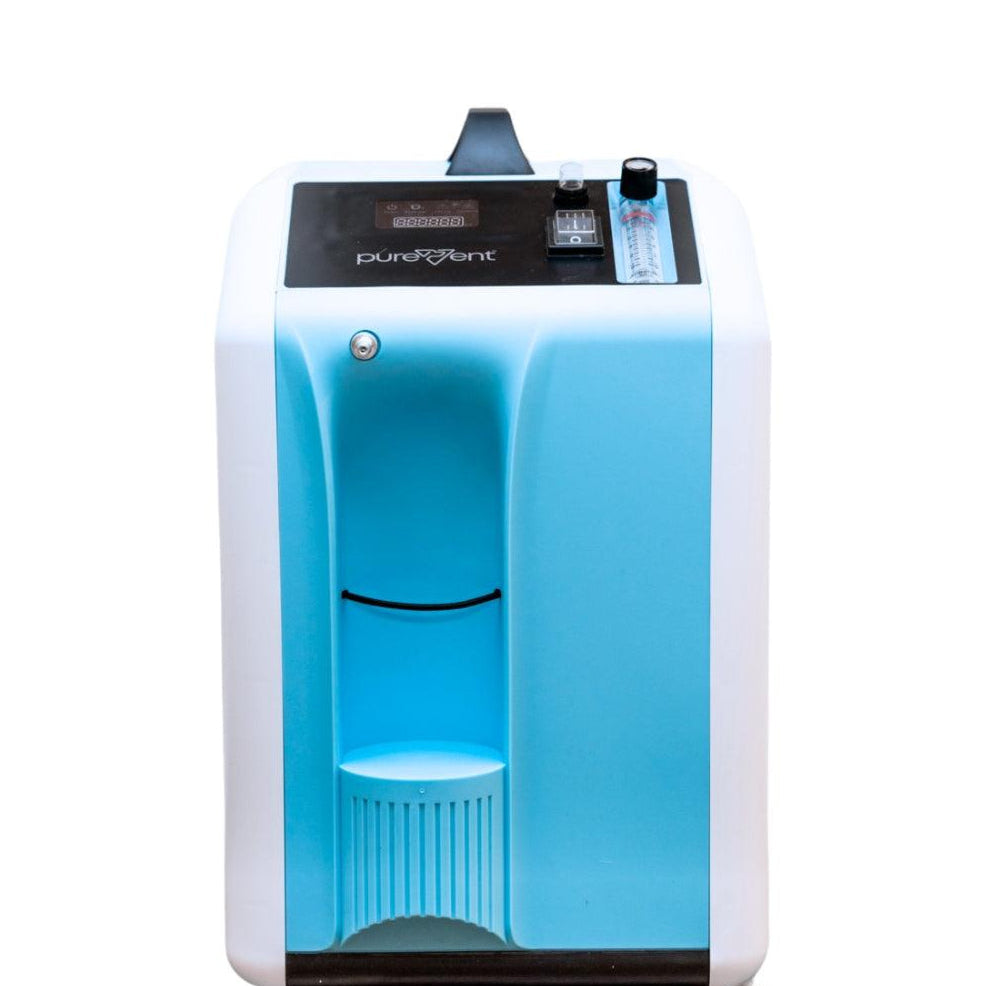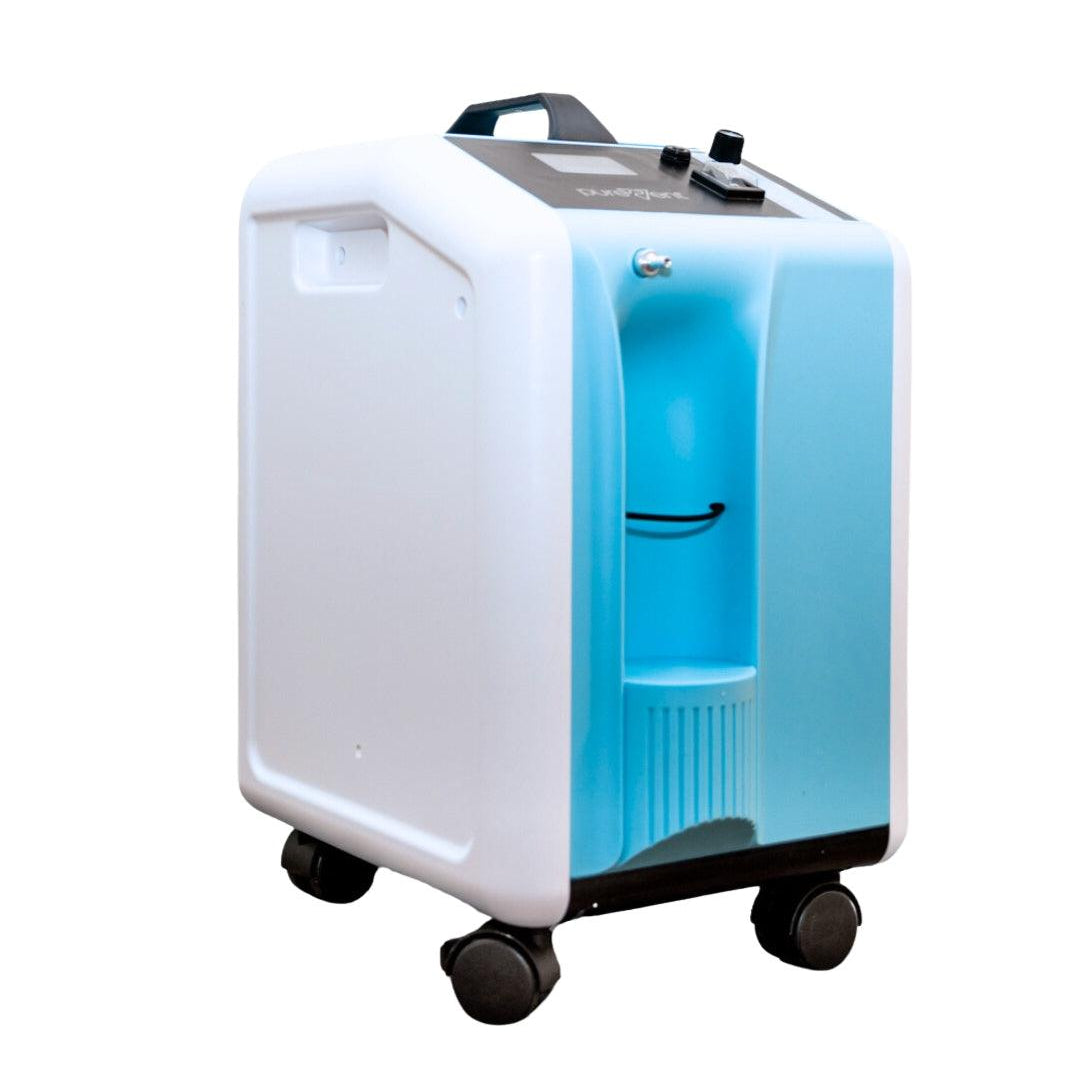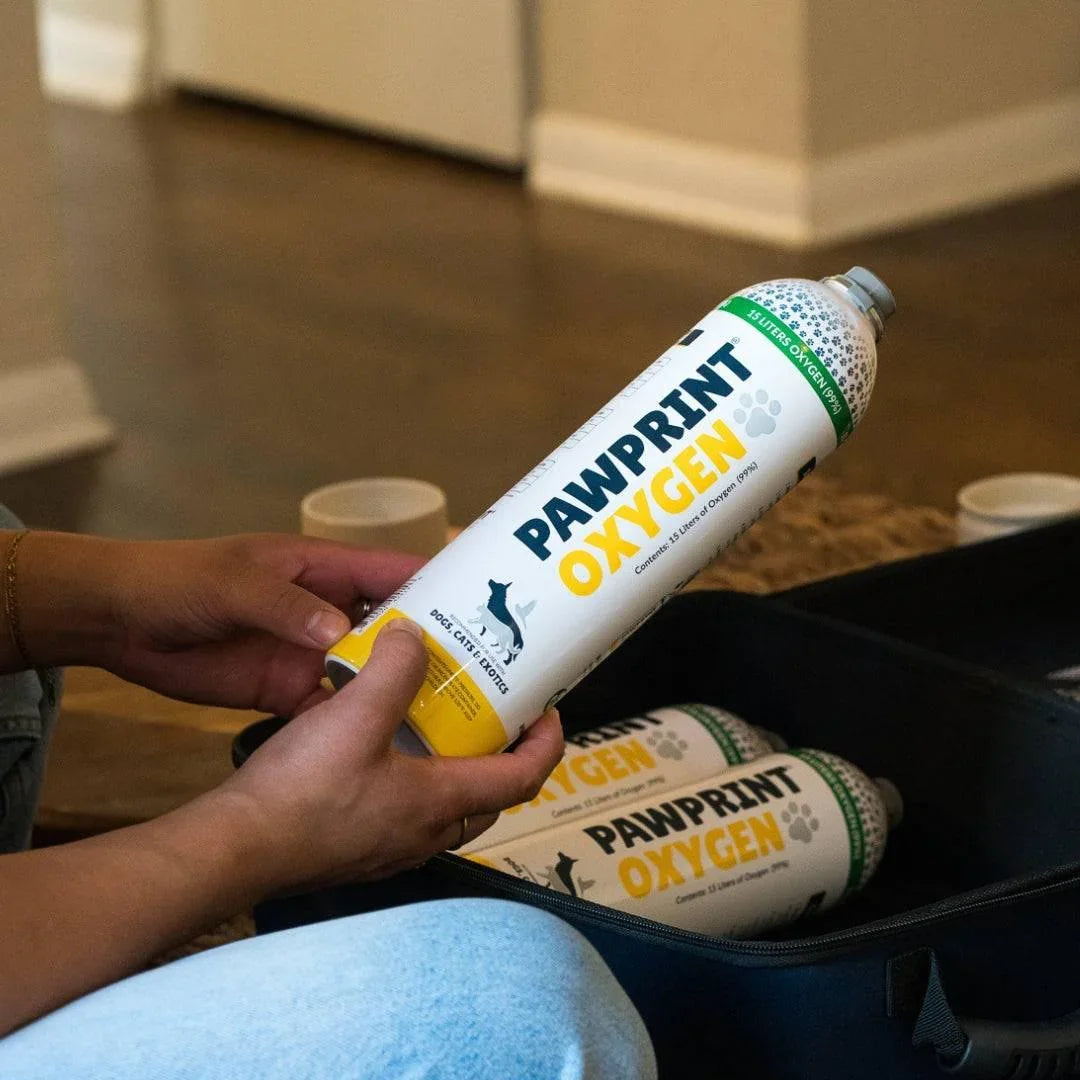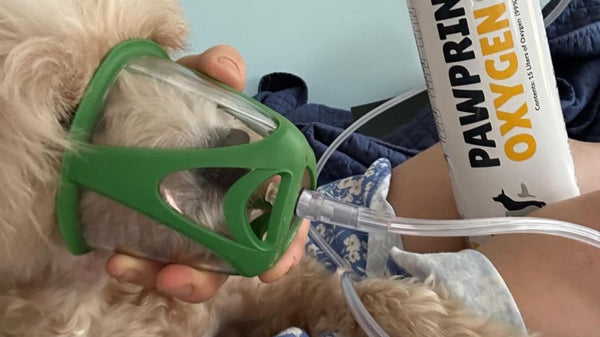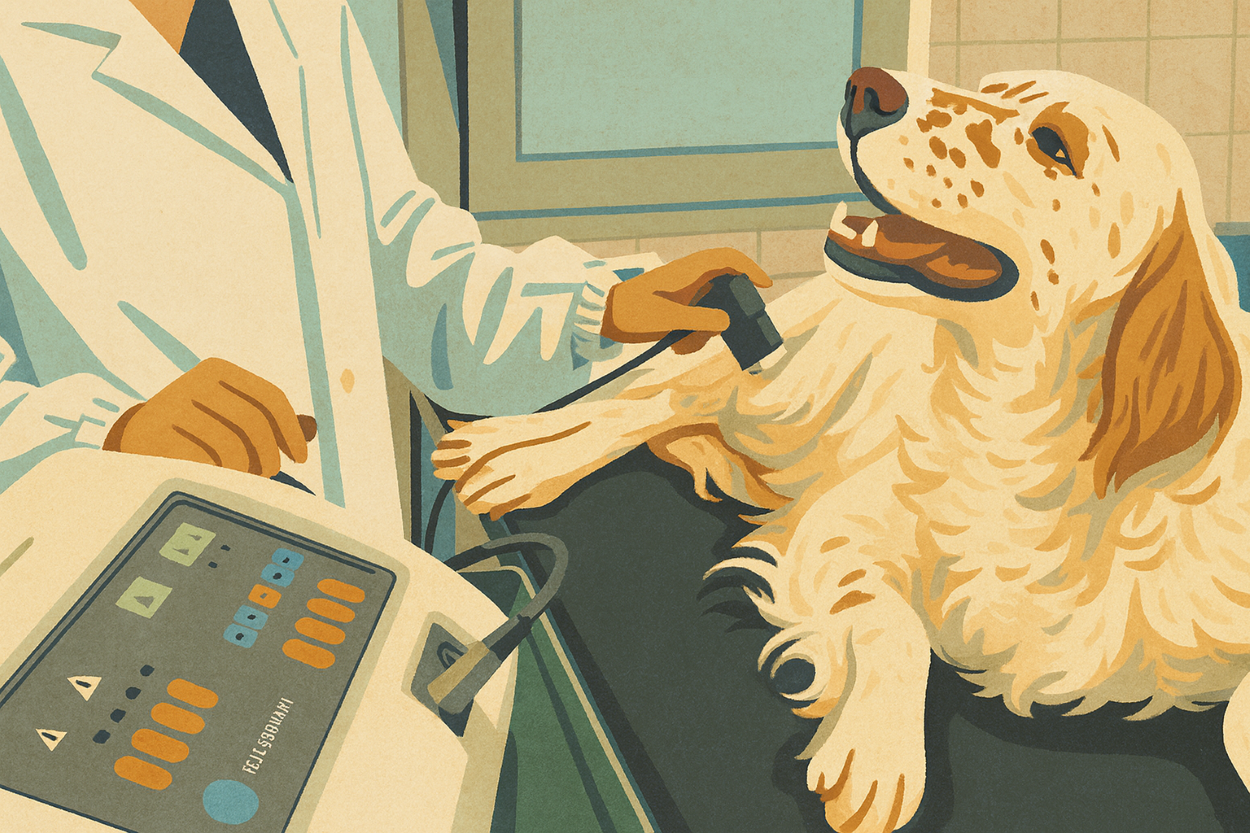Witnessing your pet having a seizure can be a frightening experience. Seizures occur due to abnormal electrical activity in the brain and can be caused by various underlying conditions, including epilepsy, toxins, metabolic disorders, or even head trauma. Symptoms may include uncontrolled shaking, drooling, loss of consciousness, or muscle rigidity. While some pets may experience isolated seizures, others suffer from chronic conditions requiring ongoing management.
If your pet has a seizure, it's essential to consult a veterinarian to determine the cause and explore appropriate treatment options. In many cases, conventional anti-seizure medications are necessary to control symptoms and prevent complications. However, some pet owners seek natural treatments to complement medical therapies, reduce seizure frequency, and improve their pet’s overall well-being.
In this article, we’ll explore six natural treatments that may help support pets with seizures at home. These options, including oxygen therapy, dietary changes, and stress reduction techniques, can work alongside veterinary care to enhance your pet’s quality of life. Always consult your veterinarian before making any changes to your pet’s treatment plan to ensure safety and effectiveness.
Table of Contents

#1: CBD Oil for Management of Seizures
Cannabidiol (CBD) oil has gained widespread attention as a natural remedy for managing seizures in pets. Derived from the hemp plant, CBD is a non-psychoactive compound that interacts with the body’s endocannabinoid system (ECS), which plays a key role in regulating neurological function, inflammation, and overall balance within the body.
How CBD Interacts with the Endocannabinoid System
The ECS consists of cannabinoid receptors (CB1 and CB2) found throughout the body, including the brain and nervous system. CBD interacts with these receptors to help modulate neuronal excitability, reduce inflammation, and promote a calming effect. This interaction is particularly beneficial for pets with epilepsy or other seizure disorders, as it can help stabilize abnormal electrical activity in the brain.
Evidence of CBD's Effectiveness in Reducing Seizure Frequency
Research suggests that CBD oil may significantly reduce seizure frequency in pets. The American Kennel Club Canine Health Foundation has funded studies exploring CBD’s effectiveness in dogs with epilepsy, and preliminary results show promise in reducing the severity and number of seizures. Additionally, a 2019 study published in the Journal of the American Veterinary Medical Association (JAVMA) found that dogs treated with CBD experienced a notable decrease in seizure episodes compared to those receiving a placebo.
Many pet owners have reported improvements in their pets’ condition after incorporating CBD into their treatment plan. While it is not a cure, CBD oil can serve as a valuable complementary therapy alongside traditional anti-seizure medications.
Recommended Dosages and Safe Usage for Dogs and Cats
When using CBD oil for seizure management, it’s essential to choose a high-quality, veterinary-formulated product free of THC (the psychoactive component in cannabis). Proper dosing depends on the pet’s weight, the severity of their condition, and their individual response to CBD.
A general guideline for dosing:
- Low dose: 0.25 mg per body weight, given twice daily
- Medium dose: 0.5 mg per pound of body weight, given twice daily
- High dose (for severe cases): 1.0 mg per pound of body weight, given twice daily
Always start with a low dose and gradually increase based on your pet’s response. Monitor for any side effects, such as lethargy, diarrhea, or changes in appetite. Consulting a veterinarian before starting CBD therapy is crucial to ensure the safest and most effective approach for your pet.
By integrating CBD oil into your pet’s seizure management plan, you may help reduce their seizure frequency and improve their quality of life naturally. However, CBD should always be used as part of a comprehensive treatment strategy, not as a sole replacement for prescribed medications.

#2: Dietary Adjustments and Supplements
A pet’s diet plays a crucial role in overall health, and for pets suffering from seizures, specific dietary modifications may help reduce seizure frequency and severity. Certain foods and supplements can support brain function, regulate neurotransmitter activity, and reduce inflammation, making dietary adjustments a natural and effective way to manage seizures at home.
Role of a Ketogenic or MCT Oil-Based Diet in Seizure Control
The ketogenic diet, which is high in fats and low in carbohydrates, has been widely studied for its benefits in managing epilepsy in humans. This diet works by shifting the body's primary energy source from glucose to ketones, which have neuroprotective properties and may help stabilize brain activity.
While research on ketogenic diets for pets is still emerging, some veterinarians and pet owners have reported improvements in seizure-prone pets when incorporating medium-chain triglycerides (MCTs), such as coconut oil or MCT oil, into their diet. MCTs are rapidly converted into ketones, providing an alternative energy source for brain cells and potentially reducing seizure susceptibility.
Ways to incorporate MCTs into your pet’s diet:
Add a small amount of MCT oil or coconut oil to your pet’s food (start with ¼ teaspoon per 10 pounds of body weight and gradually increase)
Choose a commercial ketogenic pet food formulated for epilepsy management
Work with a veterinarian to create a home-prepared ketogenic diet if appropriate for your pet
Essential Fatty Acids (Omega-3s) for Brain Health
Omega-3 fatty acids, found in fish oil, flaxseed oil, and krill oil, are anti-inflammatory and essential for brain function. They help support neural cell membranes, reduce oxidative stress, and improve cognitive function, which may be beneficial for pets with seizure disorders.
Best sources of Omega-3s for pets:
- Fish oil – Salmon oil, sardine oil, or krill oil are excellent sources
- Flaxseed oil – A plant-based alternative for Omega-3s
- Chia seeds – A natural source of Omega-3 fatty acids
For dosage, 20-50 mg of EPA/DHA per pound of body weight is a commonly recommended range for dogs and cats. However, always consult a veterinarian before supplementing to ensure the correct dosage for your pet.
Importance of Avoiding Artificial Additives and Allergens
Certain food additives, preservatives, and allergens may act as triggers for seizures in some pets. Common culprits include:
- Artificial colors and preservatives (such as BHA, BHT, and ethoxyquin)
- MSG and flavor enhancers
- Gluten and grains (in pets sensitive to carbohydrates)
- Dairy and soy (which can contribute to inflammation and digestive issues)
Switching to a high-quality, natural, grain-free, or limited-ingredient diet can help reduce inflammation and potential seizure triggers. Look for pet foods that use whole, natural ingredients with minimal processing and no artificial additives.
By optimizing your pet’s diet with healthy fats, brain-boosting Omega-3s, and eliminating potential triggers, you may help reduce seizure activity and improve their overall health. Always consult with a veterinarian before making significant dietary changes, especially if your pet is on medication or has other health conditions.
#3: Herbal Remedies for Calming the Nervous System
Herbal remedies have been used for centuries to support neurological health and reduce seizure activity. Certain herbs possess sedative, anticonvulsant, and calming properties that may help regulate the nervous system and minimize seizure triggers. While herbal treatments should never replace veterinary-prescribed medications, they can serve as a complementary therapy to promote relaxation and seizure control.
Valerian Root and Its Sedative Properties
Valerian root is well-known for its natural sedative effects, making it a useful herb for pets prone to stress-induced seizures. It works by increasing the availability of gamma-aminobutyric acid (GABA), a neurotransmitter that helps calm nerve activity in the brain. By promoting relaxation, valerian root may help reduce seizure frequency in pets with heightened anxiety or neurological excitability.
How to Use Valerian Root for Pets:
Available in tincture, capsule, or tea form (ensure it is pet-safe)
Recommended dosage: 2–5 mg per pound of body weight, given 1–2 times daily
Can be mixed into food or given as a tincture under the tongue for faster absorption
Caution: Valerian root should be used in moderation, as excessive amounts may cause drowsiness, digestive upset, or paradoxical hyperactivity in some pets. Avoid using it alongside sedative medications unless advised by a veterinarian.
Skullcap as a Natural Anticonvulsant
Skullcap is a powerful herbal anticonvulsant that has been traditionally used to help manage epilepsy and neurological disorders. It works by stabilizing nerve impulses and reducing excitability in the brain, making it beneficial for pets with seizure disorders. Skullcap is often combined with valerian root to enhance its calming effects.
How to Use Skullcap for Pets:
Available in dried herb, tincture, or capsule form
Recommended dosage: 5–10 mg per pound of body weight, given 1–2 times daily
Works well when mixed with food or added to herbal blends for seizure support
Caution: Avoid skullcap if your pet has liver disease or is on medications that affect the central nervous system. Always use pet-safe formulations, as some species of skullcap are toxic if improperly prepared.
Chamomile for Reducing Anxiety-Related Triggers
Chamomile is a gentle herb with calming, anti-inflammatory, and muscle-relaxing properties. It can help reduce anxiety-related seizure triggers, relax tense muscles, and promote restful sleep. Chamomile also contains apigenin, a compound known to support the nervous system and reduce excessive brain activity.
How to Use Chamomile for Pets:
Chamomile tea: Brew a weak tea, allow it to cool, and add 1–2 teaspoons to your pet’s water or food
Tincture: Use a pet-safe tincture and administer 1–2 drops per pound of body weight
Capsule or powdered form: Sprinkle a small amount onto food (dosage depends on the formulation)
Caution: Avoid chamomile in pregnant pets or those allergic to plants in the daisy family (Asteraceae). Overuse may cause mild digestive upset.
Final Thoughts on Herbal Remedies
Herbs like valerian root, skullcap, and chamomile can serve as natural seizure-supporting remedies by calming the nervous system and reducing seizure triggers. However, it’s important to consult a veterinarian before adding herbal treatments to your pet’s routine, especially if they are on anti-seizure medications or have underlying health conditions.
When used appropriately, these herbs may help promote relaxation, minimize seizure frequency, and support overall neurological health in pets with epilepsy or other seizure disorders.

#4: Oxygen Therapy for Seizure Relief
Oxygen therapy is a natural and effective way to support pets experiencing seizures. During a seizure, the brain's demand for oxygen increases, and a lack of adequate oxygenation can worsen neurological symptoms or prolong recovery time. Supplemental oxygen helps ensure the brain and body receive the oxygen they need, reducing the risk of complications and promoting faster post-seizure recovery.
How Supplemental Oxygen Supports Brain Function During and After Seizures
Seizures can temporarily disrupt normal breathing patterns, leading to hypoxia (oxygen deprivation) in the brain. This lack of oxygen can cause further neurological stress and, in severe cases, contribute to prolonged or cluster seizures. Administering oxygen during or immediately after a seizure can:
- Improve brain oxygenation and reduce neurological damage
- Shorten post-seizure recovery time, minimizing disorientation and distress
- Help regulate breathing if a pet is gasping or struggling after a seizure
- Prevent secondary complications, such as respiratory distress or cyanosis (bluish tint to the gums or tongue)
What is a seizure?
A seizure is a temporary episode of abnormal electrical activity in the brain that causes a variety of symptoms, like loss of consciousness, uncontrollable movements, and difficulty breathing.
How do I know if my pet is having a seizure?
Recognizing a seizure can be challenging, especially if you've never seen one before. Some signs that may indicate your pet is having a seizure include uncontrollable muscle movements, loss of consciousness, collapse, excessive drooling, loss of bladder or bowel control, and repeated movements or actions.
What should I avoid doing if my pet is having a seizure?
It's essential to avoid certain actions to ensure both your pet's safety and your own. Here are a few things NOT to do if your pet is seizing: Do not put your hands near your pet's mouth. Do not try to restrain your pet or move them unnecessarily. Do not give them food or medications until they are conscious. Do not shout or make loud noises. Do not panic.
Best Ways to Administer Oxygen at Home
For pet owners managing seizures at home, having access to supplemental oxygen can be invaluable. There are several ways to provide oxygen therapy:
- Oxygen Concentrator with a Pet Oxygen Mask: A concentrator delivers a continuous flow of oxygen through a specially designed pet mask. This is ideal for pets that experience recurrent seizures.
- Portable Oxygen Canisters: Pre-filled oxygen canisters, like those offered by Pawprint Oxygen, can provide immediate support in emergency situations.
- Oxygen Concentrator with a Pet Oxygen Chamber: Creating a low-stress oxygenated environment for recovery can be beneficial, especially for pets prone to post-seizure confusion.
Safety Considerations and When to Use Oxygen Therapy
Oxygen therapy is generally safe for pets, but it should be used under veterinary guidance, especially if seizures are frequent or severe. Here are some key considerations:
When to Administer Oxygen: After a seizure, if the pet appears weak, disoriented, or has difficulty breathing.
Monitoring Oxygen Levels: A veterinarian can recommend using a pulse oximeter to ensure oxygen levels remain within a safe range.
Avoid Overuse: While oxygen is beneficial in emergencies, prolonged or unnecessary use without monitoring can lead to dependency.
By incorporating oxygen therapy into a pet’s seizure management plan, owners can improve seizure outcomes, support faster recovery, and enhance overall comfort. If seizures occur frequently, discussing long-term oxygen solutions with a veterinarian can help provide peace of mind.
#5: Acupressure and Massage Therapy
Acupressure and massage therapy offer a natural, hands-on approach to calming the nervous system and potentially reducing seizure frequency in pets. These techniques help improve circulation, reduce muscle tension, and promote neurological balance, making them valuable tools for pets prone to seizures. While acupressure and massage are not substitutes for medical treatment, they can provide additional comfort and relaxation, especially for pets experiencing post-seizure disorientation or stress.
Benefits of Acupressure for Neurological Function
Acupressure is based on traditional Chinese medicine principles and involves applying gentle pressure to specific points on the body to stimulate energy flow (Qi) and promote healing. For pets with seizures, acupressure may help by:
- Calming overactive nerve activity that can lead to seizures
- Reducing stress and anxiety, which are common seizure triggers
- Enhancing circulation to the brain to support neurological function
- Promoting overall relaxation and balance within the nervous system
Key Pressure Points for Seizure Relief
There are several acupressure points that may be beneficial for pets with seizure disorders. These points help regulate brain function, blood circulation, and relaxation responses:
- GV-20 (Baihui) – “Hundred Meetings”
- Location: On top of the head, at the midpoint between the ears
- Benefit: Helps calm nervous system overstimulation, reduces anxiety, and improves focus after a seizure
- GV-26 – Emergency Revival Point
- Location: Just below the nose, in the groove between the nostrils
- Benefit: Often used for reviving a pet after a seizure or fainting episode
- PC-6 (Nei Guan) – Calming and Anti-Seizure Point
- Location: On the inside of the front leg, just above the wrist
- Benefit: Helps with relaxation, stress relief, and stabilizing nerve activity
- KI-3 (Kidney Meridian Point)
- Location: Inside of the hind leg, just above the ankle
- Benefit: Strengthens kidney and adrenal function, which can support neurological stability
To apply acupressure:
- Use gentle, steady pressure with your thumb or fingertips
- Hold each point for 15-30 seconds, applying light circular motions
- Observe your pet’s comfort level—if they resist, try a softer touch or shorter duration
Gentle Massage Techniques to Relax the Nervous System
Massage therapy is another non-invasive way to support pets prone to seizures. Gentle, rhythmic strokes help:
- Relax tight muscles after a seizure episode
- Increase blood flow to the brain and extremities
- Encourage deep breathing and stress relief
Some useful massage techniques for pets with seizure disorders include:
- Long, slow strokes along the spine to encourage relaxation
- Circular motions behind the ears and on the temples to relieve tension
- Light compression on the shoulders and hips to soothe muscle stiffness
- Ear massage (gently rubbing the ear flaps) to stimulate calming nerves
Massaging your pet for just 5–10 minutes daily can help lower overall stress levels, reducing the likelihood of stress-induced seizures.
Final Thoughts on Acupressure and Massage for Seizures
Acupressure and massage therapy are simple, natural ways to support neurological health, ease stress, and provide comfort to pets prone to seizures. While these techniques are not a cure, they can complement veterinary treatments and serve as a calming routine for both pet and owner. Always monitor your pet’s response and consult a veterinarian if you have concerns about using these methods alongside medical therapies.

#6: Creating a Low-Stress Environment
Stress is a well-known trigger for seizures in both humans and pets. For animals with seizure disorders, reducing environmental stressors and creating a calm, predictable space can play a key role in managing seizure frequency and severity. By implementing strategies such as calming pheromones, music therapy, and a structured routine, pet owners can help stabilize their pet’s nervous system and reduce the likelihood of stress-induced seizures.
How Stress and Environmental Triggers Contribute to Seizures
Pets with neurological conditions, including epilepsy, often have a heightened sensitivity to stress. Sudden changes, loud noises, bright lights, or emotional distress can increase neurological excitability, making a seizure more likely. Some common stress-related seizure triggers include:
- Loud noises (fireworks, thunderstorms, vacuum cleaners)
- Separation anxiety or changes in family dynamics
- Disruptions in routine (new home, visitors, travel)
- Strong scents or chemicals (cleaning products, air fresheners)
- Overstimulation from too much activity or excitement
Minimizing these triggers and creating a stable, calming environment can help regulate a pet’s nervous system and reduce seizure episodes.
Using Calming Pheromones and Music Therapy
Natural calming aids, such as pheromones and music therapy, can be highly effective in promoting relaxation for pets prone to seizures.
- Calming Pheromones – Products like Adaptil (for dogs) and Feliway (for cats) mimic natural pheromones that help pets feel safe and secure. These come in the form of diffusers, sprays, or collars and can be used in areas where your pet spends the most time.
- Music Therapy – Soft, slow-tempo music (such as classical music or specialized pet relaxation playlists) can help lower stress and anxiety. Studies have shown that playing calming music can help reduce excitability and lower cortisol levels in pets.
Tip: Look for playlists designed specifically for pets, such as "Through a Dog’s Ear" or "Relax My Cat," which use scientifically tested frequencies to soothe the nervous system.
Importance of a Consistent Routine and Safe Space for Pets
Creating a stable routine and a designated safe space is essential for pets with seizure disorders. Consistency in daily activities, feeding times, and rest periods helps prevent unnecessary stress.
Establish a daily routine: Feed, walk, and provide playtime at the same times each day. Avoid sudden changes that might cause anxiety.
Provide a quiet, safe retreat: A calm, dimly lit area (such as a cozy crate or a quiet room) can serve as a safe space for pets to relax and recover from seizures.
Limit exposure to overstimulation: If your pet is sensitive to bright lights or loud noises, consider blackout curtains and white noise machines to maintain a soothing environment.
By eliminating unnecessary stressors and establishing a tranquil, structured space, pet owners can significantly reduce stress-induced seizures and improve their pet’s overall well-being.
Final Thoughts on Stress Reduction for Seizure Management
Stress management is an important but often overlooked aspect of seizure care. By minimizing environmental stressors, using calming aids, and maintaining a stable routine, pet owners can help regulate their pet’s nervous system and provide a more seizure-friendly home environment. These strategies, when combined with veterinary guidance and other natural treatments, can play a key role in improving a pet’s quality of life.
When to Seek Veterinary Care
While natural treatments can help manage seizures in pets, they should always be used in conjunction with veterinary care. Seizures can be a symptom of underlying medical conditions, and some cases require immediate medical intervention. Knowing when to seek veterinary assistance is crucial for ensuring your pet's safety and well-being.
Signs That a Seizure Is an Emergency
Not all seizures require immediate emergency care, but certain situations demand urgent veterinary attention. Seek emergency veterinary care if your pet:
Has a seizure lasting longer than 3 minutes (status epilepticus)
Experiences multiple seizures in a row (cluster seizures) without full recovery in between
Remains disoriented, weak, or unresponsive for an extended period after a seizure
Shows signs of difficulty breathing or turns blue (cyanosis)
Has frequent seizures despite being on medication or natural treatments
Develops seizures suddenly with no prior history (could indicate poisoning, trauma, or an acute medical condition)
If your pet has had multiple seizures or their condition worsens, it is vital to have them evaluated by a veterinarian to rule out serious health issues.
The Importance of Veterinary Diagnosis and Monitoring
Seizures can result from various underlying causes, including:
- Idiopathic epilepsy (most common in dogs but less common in cats)
- Toxic exposure (ingestion of harmful substances such as chocolate, xylitol, or pesticides)
- Metabolic disorders (low blood sugar, liver disease, kidney failure)
- Brain abnormalities (tumors, infections, trauma)
A veterinarian will perform a thorough physical exam, blood tests, and possibly imaging (MRI, CT scan) to determine the cause of your pet’s seizures. A proper diagnosis is essential to developing an effective treatment plan.
Veterinary monitoring is also critical for pets already diagnosed with epilepsy. Even if a pet responds well to natural treatments, regular check-ups help track their condition and adjust treatment as needed.
How Natural Treatments Should Complement, Not Replace, Medical Intervention
Natural remedies such as CBD oil, dietary changes, oxygen therapy, herbal supplements, acupressure, and stress reduction techniques can provide additional support, but they should not replace prescribed anti-seizure medications when necessary. Some pets require antiepileptic drugs (AEDs) such as phenobarbital, potassium bromide, or levetiracetam to effectively manage their condition.
If you are considering adding natural treatments to your pet’s care plan:
- Consult your veterinarian first to ensure they won’t interfere with prescribed medications.
- Monitor your pet’s response and keep a seizure journal to track progress.
- Be cautious with dosing—even natural remedies can cause adverse effects if not used properly.
Final Thoughts on Seeking Veterinary Care
While natural treatments can play a supportive role in managing seizures at home, veterinary care is essential for diagnosing the underlying cause, ensuring proper treatment, and monitoring long-term health. By combining medical intervention with holistic approaches, pet owners can create a comprehensive and effective seizure management plan that prioritizes their pet’s safety and well-being.

Creating a Well-rounded Seizure Management Plan
Managing seizures in pets can be challenging, but incorporating natural treatments alongside veterinary care can provide additional support and improve your pet’s quality of life. Throughout this article, we explored six natural approaches that may help reduce seizure frequency and promote neurological health, including CBD oil, dietary adjustments, oxygen therapy, herbal remedies, acupressure and massage therapy, and stress reduction techniques. These methods can play a valuable role in calming the nervous system, reducing inflammation, and creating a stable environment for pets prone to seizures.
A holistic approach to seizure management considers the pet’s overall well-being, addressing both physical and emotional triggers. While natural treatments offer promising benefits, they should always be used in conjunction with veterinary guidance. Seizures can have underlying medical causes that require proper diagnosis and medical treatment. Working with a veterinarian ensures that your pet receives the best possible care, whether through prescription medications, lifestyle changes, or complementary therapies.
If you are considering implementing natural treatments for your pet’s seizures, always consult your veterinarian first. They can guide you on safe dosages, potential interactions with medications, and the best approach tailored to your pet’s specific needs. By combining medical expertise with holistic care, you can create a well-rounded seizure management plan that prioritizes your pet’s safety, comfort, and overall health.





